AMD AM1 Kabini Part 2: Athlon 5350/5150 and Sempron 3850/2650 Tested
by Ian Cutress on May 29, 2014 2:00 PM ESTCPU Synthetic Benchmarks
Content Creation - Cinebench
Based on MAXON’s CINEMA 4D animation software, Cinebench is used to determine the CPU and graphics performance via OpenGL. The software has gone through many iterations over the years, and here we use versions 10, 11.5 and 15 to compare single-threaded and multi-threaded CPU performance. As the generations increase, the software becomes more multithread aware and scales better, however for consistency with older results we keep the version 10 results in our database.
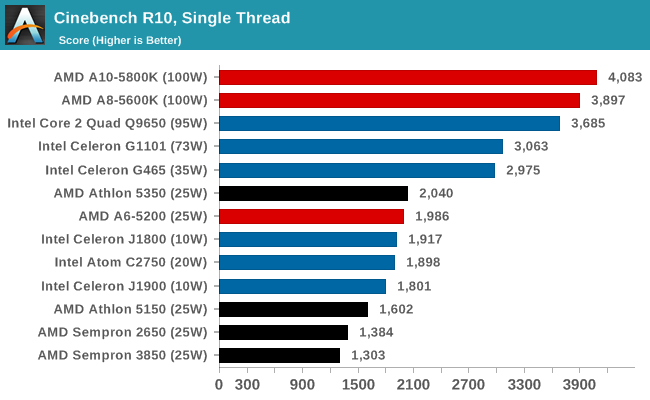
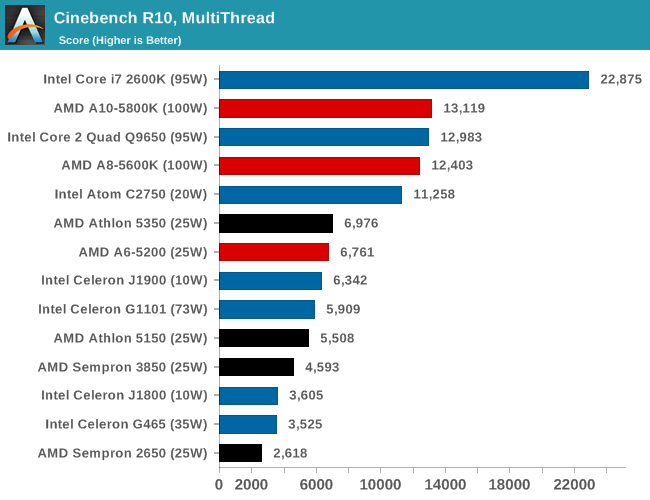
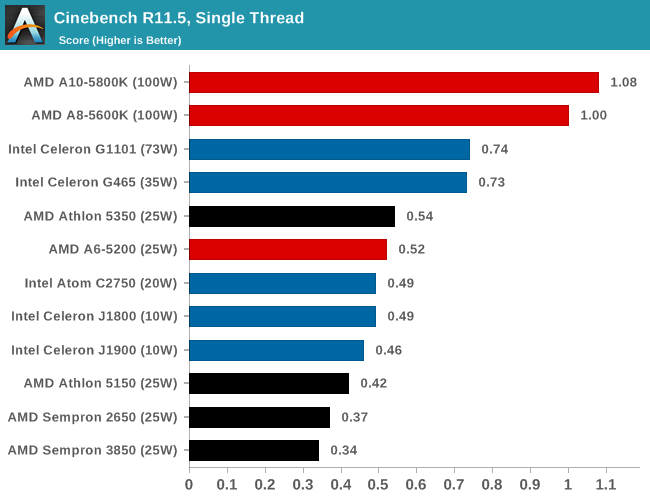
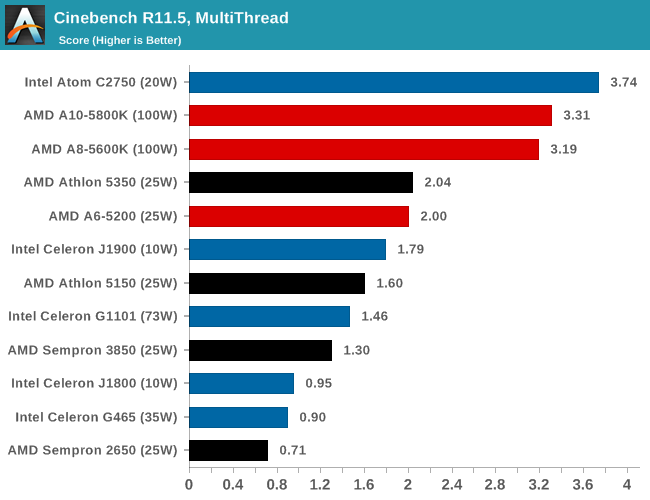
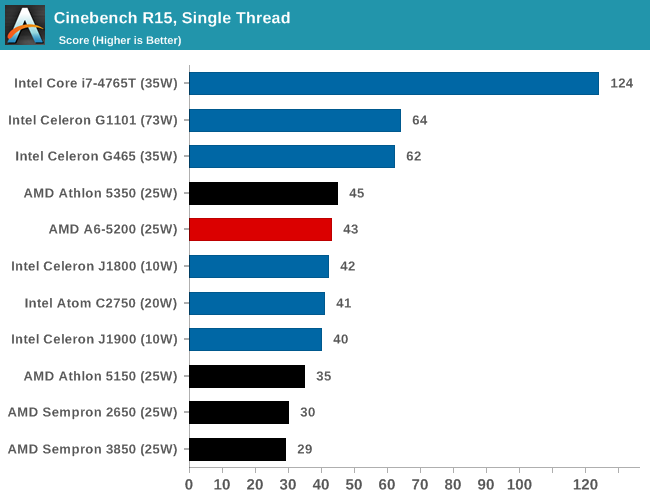
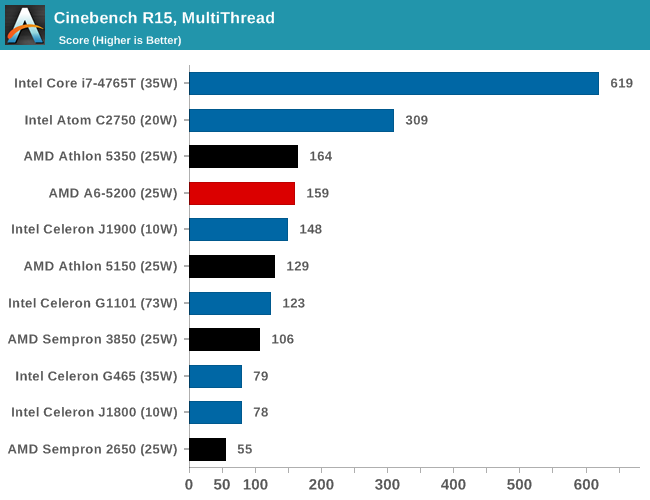
Synthetic – 7-Zip 9.2: link
As an open source compression tool, 7-Zip is a popular tool for making sets of files easier to handle and transfer. The software offers up its own benchmark, to which we report the result.
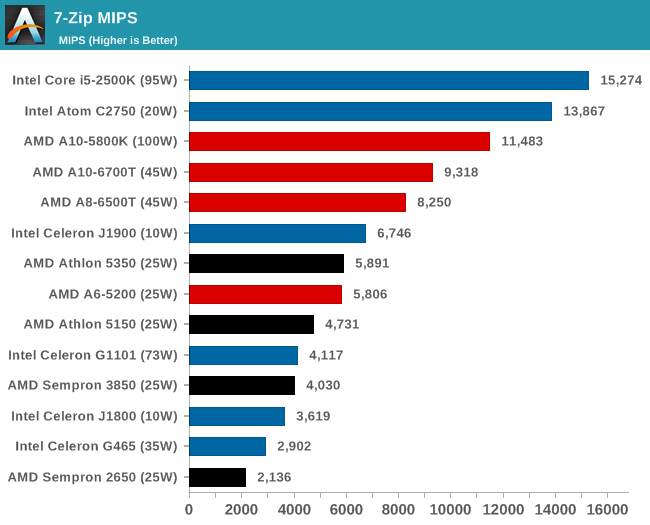
Rendering – PovRay 3.7: link
The Persistence of Vision RayTracer, or PovRay, is a freeware package for as the name suggests, ray tracing. It is a pure renderer, rather than modeling software, but the latest beta version contains a handy benchmark for stressing all processing threads on a platform. We have been using this test in motherboard reviews to test memory stability at various CPU speeds to good effect – if it passes the test, the IMC in the CPU is stable for a given CPU speed. As a CPU test, it runs for approximately 2-3 minutes on high end platforms.

Console Emulation –Dolphin Benchmark: link
At the start of 2014 I was emailed with a link to a new emulation benchmark based on the Dolphin Emulator. The issue with emulators tends to be two-fold: game licensing and raw CPU power required for the emulation. As a result, many emulators are often bound by single thread CPU performance, and general reports tended to suggest that Haswell provided a significant post to emulator performance. This benchmark runs a Wii program that raytraces a complex 3D scene inside the Dolphin Wii emulator. Performance on this benchmark is a good proxy of the speed of Dolphin CPU emulation, which is an intensive single core task using most aspects of a CPU. Results are given in minutes, where the Wii itself scores 17.53; meaning that anything scoring better than this is faster than an actual Wii for processing Wii code, albeit emulated.











87 Comments
View All Comments
Ian Cutress - Thursday, May 29, 2014 - link
I've adjusted most of the severe cases into graphs that are easier to read :)easp - Thursday, May 29, 2014 - link
Better, but dude, the red bars stand out, and yet they represent something other than the focus of the article. Given the color pallet, I'd assume that the black bars were the least significant numbers, the background information, and yet, they actually represent the focal point of the article.Ian Cutress - Thursday, May 29, 2014 - link
I originally have had blue for Intel and red for AMD. Black is the only other color I can add that doesn't look odd; if graphs start having three-plus colors then it just looks a little odd. It might be worth greying everything and just highlighting the important points without an Intel/AMD distinction except in the labelling for the future.edzieba - Friday, May 30, 2014 - link
How about adding 'cores' to bars that are immediately relevant to the articke (e.g. an orange line in the centre of the bars for the socketed Kabinis and the Celerons). This would highlight the bars that are being compared directly, while still being in the context of all the other data, and keeping the expected blue/Intel red/AMD bar colouring intact.DanNeely - Friday, May 30, 2014 - link
Thanks, that's much better.pjkenned - Thursday, May 29, 2014 - link
Ian - good to see you had similar results as I did. The other bit is that the J1900 can be passively cooled while the AM1 chips need active coolers. That helps lower power consumption, noise and points of failure.I think I had benchmarks with the Raspberry Pi also - these are MUCH faster.
buffhr - Thursday, May 29, 2014 - link
Would have been nice if you could have included some hd video playback (1080p/720p/3D) and impressions.vesoljc - Thursday, May 29, 2014 - link
I second this!nirolf - Friday, May 30, 2014 - link
Me too! Should be fine, but what about 4K?BMNify - Saturday, May 31, 2014 - link
"but what about 4K?"what about it!, it doesn't really exist for consumers, oh perhaps you mean pseudocolor UHD 2160p, or the real colour UHD-1 3840 pixels wide by 2160 tall at 10bit or 12bit per pixel content today as used by several ARM Cortex Soc